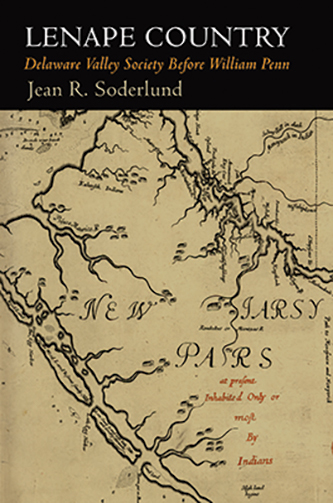New Light on the Lenapes
The relationships among the Lenape Indians and Dutch, Swedish, Finnish and British colonists are at the core of Lenape Country: Delaware Valley Society before William Penn (University of Pennsylvania Press, 2014), a book by Jean Soderlund, professor of history. The book covers the early 1600s to the mid-1700s.
When Penn sailed to America in 1682 with a royal charter, the Lenapes inhabited the region now bounded by northern Delaware, eastern Pennsylvania, central New Jersey and the Atlantic Ocean.
Together with early Swedish and Finnish colonists, says Soderlund, the Lenapes created the distinctive features of Delaware Valley society. Their ideals included respect for other cultures, peace between Native Americans and Europeans, religious liberty, an emphasis on trade, and a belief in personal freedom. Lenapes had no central government, each town operating independently except for diplomacy and in war. Lenape towns were led by a trusted spokesman, or sachem, but they were democratic, and many adults had a voice in making important decisions.
Penn’s Quakers reinforced this culture, says Soderlund, but their sheer numbers eventually pushed most Lenapes out of their homelands in eastern Pennsylvania. Nonetheless, the Lenape impact on Delaware Valley society continued through the early 18th century.
Posted on:


